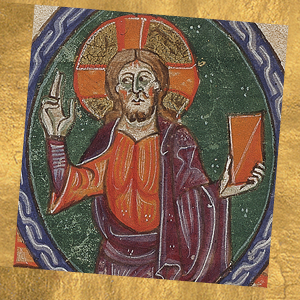Sts. Simon and Jude (Taddeo), Apostles

St. Jude Thaddeus and St. Simon, two of the least known Apostles, are paradoxically among the closest to their Master, two of his cousins. At least, the tradition is quite certain of it as regards Jude Thaddeus, since it is clear from the Scriptures that his father, Alpheus, was the brother of St. Joseph, while his mother, Mary Cleophas, was a cousin of the Virgin. As for Simon, things are shrouded in fog.
Many faces, an Apostle
The Gospel names St. Simon as the tenth apostle, just before Jude Thaddeus. Many identify in Simon the homonymous cousin of Christ, brother of James the Younger. The Byzantines identify in him Nathanael of Cana and the canteen director at the wedding of Cana, while St. Fortunatus of Poitiers states that Simon and Jude Thaddeus were buried in Suanir, a city in Persia, where they suffered martyrdom. According to tradition, it is almost certainly in this part of the world that Simon, known as the Zealot or the Canaanite, as the evangelists Matthew and Mark call him, crossed paths with Jude THaddeus, who would be his companion in mission until the end.
Jude, the faithful disciple
When the Eleven dispersed from Jerusalem to proclaim the Kingdom of God in other lands, Jude Thaddeus departed from Galilee and Samaria to go into Syria, Armenia and ancient Persia. In this area, authoritative sources claim, he met Simon, and their missionary partnership won tens of thousands of Babylonians and people from other cities for Christ. As always, the Gospel earned for itself both followers and enemies: for the two Apostles, the hour of supreme witness eventually arrived.
The courage to be called Christians
Arrested and taken to the Temple of the Sun, the sentence imposed on both was to worship the goddess Diana, and so to deny Christ. In refusing, it is said that Jude Thaddeus declared pagan idols false, and that at the same time two horrible demons came out of the temple, destroying him. Frightened, the people watching the scene are said to have pounced ferociously on the two Apostles, who are brutally killed. Their relics are kept in the Basilica of Saint Peter.







